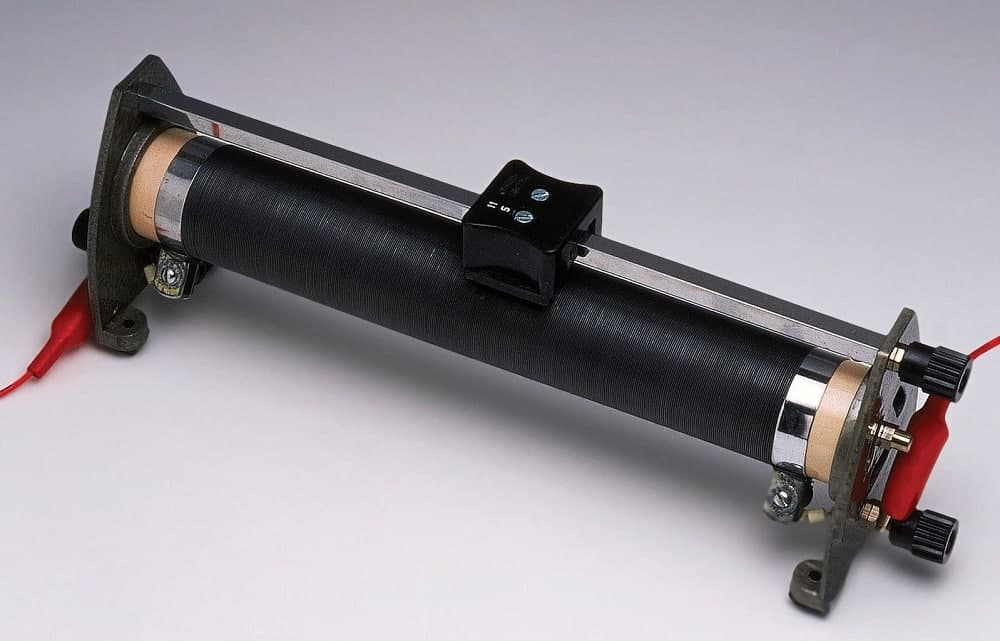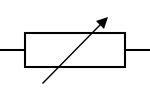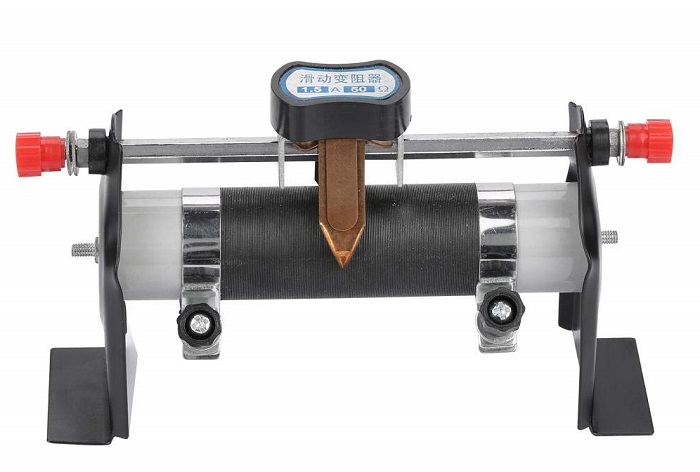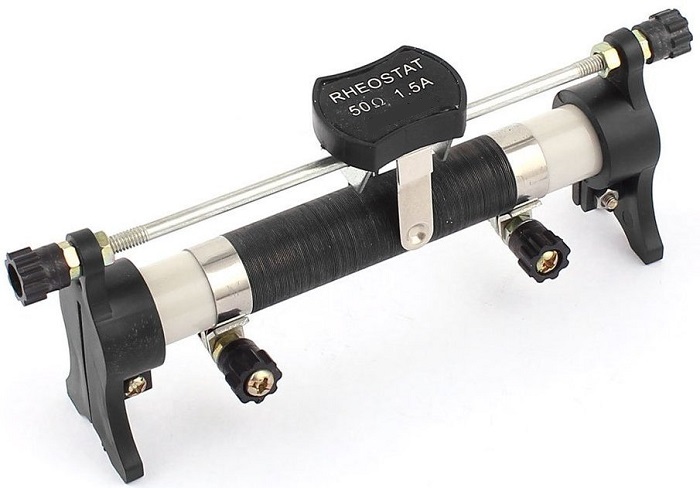If you are among the ones who search to know what rheostat is, you are in the right place. In this article from Linquip, we want to talk about rheostats, how they work, their types and function, and so on. If you are eager to know how they help our day to day life, continue reading this article.
What is Rheostat?
That’s the question we want to answer in this article. If you want to understand the rheostat diagram, you need to know what is meant by rheostat and its definition.
-
What is meant by rheostat?
Rheostat Wikipedia definition defines it as “a two-terminal variable resistor”. This resistor has been designed to control the flow of the current throughout a circuit. Rheostat can change the resistance of the circuit without any disruption as well. Many people think these adjustable resistors are the same as potentiometers. Although they are very similar, the difference is that they only use two terminals.
Rheostat symbol is pretty simple too. Although different standards have different symbols for rheostats, the most commonly used is a rectangle that is placed between two linear lines, and a tilted arrow crosses the rectangle. You can see this symbol in the image below:
Types of rheostats
Now, let’s dive into the world of different rheostat types. There are different types of rheostats in the market but three of them are more popular than the others. These types are Linear, Rotary, and Preset. The most popular rheostat type is rotary.
-
Rotary rheostat
This type, as mentioned above, is the commonly used one. A rotary rheostat is normally used in power applications. As the name suggests, its resistive path is rotary. There’s a shaft that’s mounted on top of rheostat’s wiper and its movement will change the length that’s affecting the resistance.
-
Linear rheostat
Linear rheostat’s working principle is the same as the rotary ones. But the difference between these two is the movement that affects the resistance. The linear one, unlike rotary rheostat, has a linear movement for changing the length. This rheostat type is usually used in laboratory applications. Linear rheostat’s sliding terminal moves across a linear path to change the resistance. For using a rheostat, only one of its fixed terminals will be connected to the slider.
-
Preset rheostat
The third item in the most popular rheostat type is the preset rheostat. This type is usually used in a printed circuit board (also known as PCB). If rheostats are used in PCBs, they are preset rheostats; if used elsewhere, they are considered as trimmers. Preset rheostats have been designed for calibration purposes inside such circuits.
This small rheostat also has two terminal (and sometimes three) but only one fixed terminal is used. Keep in mind that even in three-terminal rheostats, only two terminals are used. You can also wire potentiometers to work as a rheostat for different purposes.
Working of rheostat
Up to here, you only learned “what is rheostat” and its different types. But knowing how it works and its uses are also important to know exactly “what is a rheostat used for” and how it can help improve the quality of your life.
-
How does a rheostat control the current in a circuit?
In order to change the current in a circuit, its applied voltage or its resistance should change. Rheostat function for changing the circuit’s current happens by changing the resistance of the circuit. Increasing the resistance leads to a decrease in the current of the circuit. And if you need to increase the current, you should decrease the resistance.
Different factors affect the resistance and therefore, the current: length, type, and area of cross-section. For a rheostat, this factor is the length. The aforementioned contact that moves in a rheostat is the item that is used for changing the length, resulting in a change in resistance and therefore, in the current.
-
Does a rheostat reduce voltage?
A rheostat’s main function is to change the current. So, when it’s placed across a voltage source, there would be a fixed voltage across the rheostat. With the increase of the resistance, the current decreases. Remember that V=IR in the basic electrical engineering (V stands for voltage, I is for current and R is for resistance) since the voltage source is fixed, the two other factors should change to affect the voltage.
Since rheostats are used to change the current, and the voltage is fixed, it should change the resistance to affect the current and this process also affects the voltage. So, you can say that the voltage can also be controlled by a rheostat since the two items that affect the voltage changes via rheostat.
-
How do you use a rheostat?
Rheostat uses are different but the main use of a rheostat is when controlling the current in a circuit is needed. You can use them as a voltage divider, or even as a variable resistive load. Rheostats are also used in testing laboratories and electrical workshops for testing purposes.
You can test different circuits with various currents that are changed via a rheostat. Plus, you can provide different voltage conditions for the circuits in those labs. Another common use of rheostats is in lighting circuits. You can use them as dimming devices in those circuits.
So, that was the answer to “what is a rheostat?” now you can easily describe what a rheostat is, how it works, and its function. Plus, you learned how useful they are for changing the current and even their application in lighting circuits. If you have any questions about rheostats, you can sign up on Linquip and ask our experts. Comment below and let us know what you think about this adjustable resistor.
Buy Equipment or Ask for a Service
By using Linquip RFQ Service, you can expect to receive quotations from various suppliers across multiple industries and regions.
Click Here to Request a Quotation From Suppliers and Service Providers
Read More on Linquip
- 13 Parts of CNC Machine + Function & PDF: A Clear Guide
- What is a Polarized Capacitor? Function and Applications
- What is Capacitive Circuit? Formula & Function
- What is Inductor? Usage & Function | Linquip
- What is a Non-Polarized Capacitor? Types & Function
- What is the Difference Between Potentiometer and Rheostat?







Share the size Dimentions for 10A
Dimensions: 304.8 x 76.2mm
Length: 76.2mm
Hi please can any one help I have a 24v 500w motor and I need to control the speed from 0 to 100 % I have burnt out 3 normal speed controllers, could I use a rheostat ?
Any advice would be appreciated